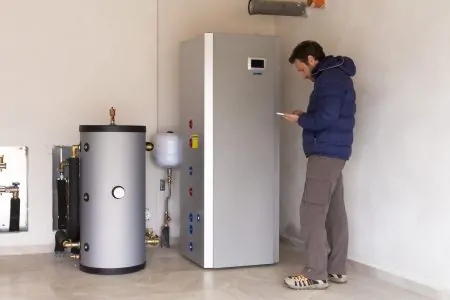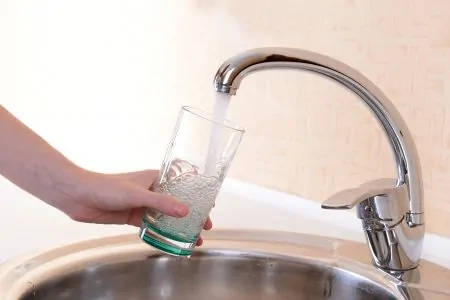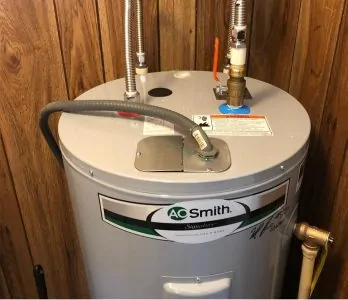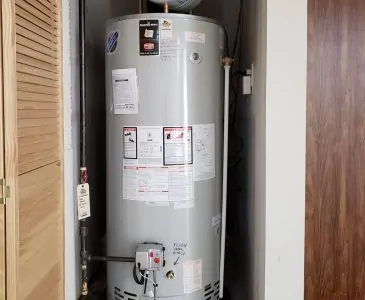Hot water is an important part of our daily lives, helping us stay clean, heating our homes, and providing some of our favorite drinks. When your faucet suddenly releases milky white or cloudy water, you could be understandably concerned.
The good news is that under normal circumstances, the cloudy appearance fades within a few minutes, leaving your water as clear as it should be. However, sometimes the issue lingers and you might need to address it.
In this article, we will take a closer look at why hot water turns cloudy and what you can do about it.
Key Takeaways
- Cloudy hot water is usually caused by air bubbles in the water, which occurs when cold water is heated by a water heater and then released through a faucet.
- If the cloudiness does not disappear within a few minutes, there might be an issue with your plumbing or contamination in your water supply.
- Cloudy hot water that clears up after a few minutes is safe to drink, but if it remains cloudy for more than 24 hours, contact your local water department.
- To clear up cloudy water, let it sit for a few minutes or run the water for a while to release any trapped air bubbles.
What Causes Cloudy Hot Water?
Normally, cloudy hot water is the result of air in your water. Cold water can hold more dissolved air than warm water. When cold water moves from the pipes in your home through your water heater, it warms up. During this process, the water loses its ability to keep the air in a dissolved state.
While the water is under pressure within the pipes, the air cannot escape. When you open a faucet, the pressure is suddenly reduced, which allows the air to be released in the form of tiny bubbles.
These bubbles in hot water form the cloudy or milky white substance that you can see (1). Use a clean glass or jug to collect some water, place it on a counter and watch it. If all is well, within a couple of minutes, the water then turns clear from the bottom up.
Think of a bottle of champagne. The moment someone pops the cork, the pressure is released from the bottle, and the bubbles overflow. This is the same principle.
If you want to get rid of the cloudiness, let the water run for a while. Collect this water in a container and, in the spirit of water conservation, use it for something. Uses for this water might include watering your plants or cleaning your car.
Other Causes of Cloudy Water
There are other reasons that cloudy water might come from your faucet, including:
1. Use of Ozone Disinfection
Local water authorities may use ozone to disinfect water. Ozone gas is produced when oxygen molecules collide with oxygen atoms. Ozone is far more effective than chlorine and is used to destroy bacteria and viruses.
2. Plumbing Issues in Your Home
Check with your neighbors to discover whether or not they are also receiving cloudy water from their taps. If their water is clear, there might be a problem with your plumbing.
If only one faucet supplies cloudy hot water, look at the aerator in your tap. Clogged aerators can increase tap pressure, which can cause the water to appear cloudy (2).
A quick way to unclog the aerator is to clean it using a half-white vinegar and half-water solution. You should then rinse the aerator thoroughly and reinstall it. Alternatively, replace it with a new one.
When more than one faucet is releasing cloudy water, we recommend calling in a plumber. They will look at your faucets, pipes, and water heater in order to diagnose the problem. It might be a minor problem or you could need a new water heater.
3. Repairs by the Water Department
Occasionally, the water department may shut off the mains supply in order to carry out repairs. During this time, air can get into the water supply and dissolve.
Once the team switches the mains back on, the water pressure is restored. At this point, if you open the tap, the water might have a milky white appearance. This could last a couple of hours, days, or even weeks.
Is Cloudy Hot Water Safe to Drink?
Cloudy or milky hot water from only one faucet that clears up after a few minutes is safe to drink. As mentioned previously, it is caused by air bubbles.
If the water remains cloudy for more than 24 hours, please contact your local water department.
If you don’t hear back from them for a while, avoid drinking the suspicious water. Use bottled water instead, or any other treated water.
What If the Water Does Not Clear?
Cloudy hot water resulting from air bubbles clears from the bottom up. What does it mean when the opposite occurs? Water that clears at the top while the bottom remains cloudy is most likely contaminated.
There could be impurities such as sand, stones, rock, or dirt present in the water. If this happens, call your local water department to establish where the contamination is coming from. They will investigate how to fix the cloudy tap water.
Does Cold Water Become Cloudy?
Cold water rarely becomes cloudy but, if it does, you should monitor it in the same way as cloudy hot water.
What about the whitish or cloudy look that ice cubes get?
Water contains impurities, which are not necessarily harmful bacteria, viruses, or germs. These impurities can include calcium, magnesium, nitrates, lime, and fluoride.
When frozen, these impurities gather near the middle, which is what gives ice cubes their cloudy appearance. You will notice that ice cubes made from distilled water are much clearer (3).













